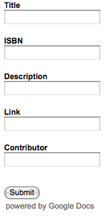My introduction to Google Sites confused me for a bit. I received an email from Google providing a link. The content of the email indicated I had inquired about JotSpot some time ago and that I may now be interested in what JotSpot had become. I tried to sign in with my Gmail name and password (a common way to gain access to Google apps) without reading the instructions and I was asked to enter my university or business email address. This did not make a lot of sense at first because my inquiry about JotSpot had nothing to do with my university affiliation.
I did enter the address as requested and then was asked whether I was the administrator (domain owner) or a member of the domain. If I would have been a little more adventuresome, I should have claimed to be the University of North Dakota domain administrator just to see what would happen. I did call to chat with the CIO just to find out if they were aware of the new Google Site and she had the university security person investigate. Evidently, several students were already enrolled. I never did find out who was the administrator. I called my wife and had her inform her boss (the tech administrator for Grand Forks Schools) so that someone from their tech group would claim the administrator role.
Google Sites intends to be web service for educational institutions and businesses. Evidently, there must be student web pages associated with the University of North Dakota. University departments will not be using Google Site here. The university has a “branding” thing going and wants official pages to have the same look and feel. I know because I operated the pages for the psychology department for many years and I had to redo all of our content to use the template required by the university. Actually, I am not a fan of the UND look and feel – it is pretty garish by my taste. I prefer simple and tasteful.
Anyway, it will be interesting to see how the university reacts to personal pages that will now be affiliated with the university domain name. For example, what will be the reaction to content migrated from MySpace or Facebook? What expectations will be applied to faculty members? Before, you could obtain an account for acceptable purposes, but you requested the account from the university. I was able to secure my account from Google.
5 total views

